There is much debate now—in both developed and developing economies—on the merits or de-merits of universal basic income (UBI), with strong opinions on either side. Advocates clash with those who see targeted transfers to the poor—such as the conditional cash transfers first pioneered in Latin America—as better at providing incentives for long-term investments in health, education, and labor force participation. Yet some research finds that targeted public welfare programs often come with stigma and disempowerment, in addition to high administrative costs, supporting the case for universal basic income guarantees. Critics of universal programs highlight the fiscal burdens such programs can impose, as well as labor market and other disincentives that they may introduce.
We surely cannot resolve those debates. Yet our recent research on the subjective well-being effects of a wide range of social assistance programs in Iraq may inform them. Iraq is a middle-income country with a tragic recent history of violence and conflict, yet a wealth of oil reserves with which to fund extensive income transfers to its population. While not all of the findings are generalizable, a number of them are relevant to the provision of social support in other countries.
Subjective and objective well-being metrics are complementary measures of development. They do not always move in the same direction, however, and the gaps in what each find often highlight anomalies and progress paradoxes. For example, while in theory additional income (regardless of the source) should contribute positively to individuals’ welfare, transfers do not always enhance subjective well-being. Our research on Iraq suggests that the way in which income is generated matters, even in contexts of conflict and instability. Self-generated income is more conducive to life satisfaction than non-contributory public or private income assistance. Some types of public transfers are even negatively associated with life satisfaction, likely due to a sense of loss in autonomy, self-worth, and creativity for recipients.
Since the early 1980s, Iraq has been at the center of various types of domestic and international conflicts, with devastating economic and social consequences. Given Iraq’s recent history, public transfers play a crucial role in the very survival of Iraqi citizens, and, as such, should enhance life satisfaction and other dimensions of well-being. We looked into this question, using the 2012 Iraq Household Survey, the most comprehensive survey ever carried out there. The survey provides a wide range of information on income, socioeconomic traits, transfers, and subjective well-being at the individual level. We found that even in the extreme economic and political uncertainty in Iraq, individuals derive greater satisfaction from public assistance programs and income generation processes that emphasize self-reliance and independence.
In 2012, about 20 percent of Iraqis lived under the poverty line, with another large proportion of the population vulnerable to falling into poverty. Surprisingly, male-headed households were, on average, poorer than female-headed ones. Female heads accounted for approximately 12 percent of households, the majority of whom were widows. The lower poverty rate among female-headed households (16 percent versus 20 percent for male-headed households) was likely due to the additional assistance that they received from various sources. Areas other than Baghdad and the Kurdish region had more poverty; in 2012, the headcount poverty rates in the Kurdish region, Baghdad, and the rest of Iraq were 12 percent, 18 percent, and 22 percent, respectively. Families in the distant Kurdish region were less dependent on assistance than the rest of Iraq.
Government support is a major component of family income in Iraq. Non-labor income, which is dominated by government assistance but also includes private income assistance and capital income (income generated from own assets and property), accounts for 32 percent of total income for Iraqi families. For households in the poorest income decile, it is as high as 51 percent of total family income.
The survey includes a life satisfaction question, which runs from not at all to very satisfied on a 1 to 4 scale, as well as questions about satisfaction with domains such as employment, income, and neighborhood security. Overall life satisfaction in Iraq is remarkably high. Its ranking among world countries for 2010-2012, for example, was 105 out of 162 countries, scoring higher than several wealthier countries without conflict. This may reflect the remarkable human capacity to adapt to adversity that one of us has found in many poor countries around the world.
Yet there are differences across regions and domains of life in Iraq. Satisfaction with work, housing, and income is lower than that with life in general—not a surprise given the economic conditions in the country. The Kurdish region has the highest levels of life satisfaction (Figure 2).
Receiving any type of assistance (public or private) is, on average, associated negatively with life satisfaction. Individuals who live in households that receive assistance are 0.116 points lower on the life satisfaction scale than those in households that do not receive any assistance. This negative association is mitigated slightly (while remaining negative) for individuals below the poverty line.
Contrary to our expectations, the negative association between receiving assistance and life satisfaction is greater in magnitude (1.5 times the size) for female-headed households than male-headed households. This could be because of the higher poverty rate among male-headed households, although there are likely other forces at play that we cannot observe. For example, there may be gender-specific barriers that make the process of receiving assistance more challenging or discouraging for women. When contrasting regions, our results show that any assistance and life satisfaction is associated positively in the Kurdish region and negatively in other parts of Iraq. This finding is contrary to what we expected, since living conditions in the Kurdish regions were better than in the rest of the country. One explanation is that since the flow of assistance from Baghdad to the Kurdish region has fluctuated and is dependent on political events, receiving assistance from the central government is received more positively. Alternatively, the delivery is more efficient and transparent there.
Food rations (Public Distribution System – PDS) are virtually universally distributed and account for the largest component of non-labor income. We find that living in a household that is the recipient of food rations does not have a significant relationship with life satisfaction in Iraq. However, the association is significant and positive for the poor. We also looked at pensions, particularly households that have at least one member who is of pensionable age and households in which at least one resident is a widow/widower. On average, receiving a pension is linked positively to life satisfaction in Iraq, and the effect is, not surprisingly, slightly stronger for the poor (Figure 3).
The Social Protection Network (SPN) aims to reach vulnerable individuals. However, since the program targets households based on categories other than income (such as the disabled, orphans, divorced/widowed women, married university students, and the internally displaced), many non-poor families also benefit from the program. On average, being the recipient of these is associated negatively with life satisfaction, but is not significant for the poor or for female-headed households. Once again, the negative effect is smaller in the Kurdish region.
Receiving cash and in-kind transfers from private sources, meanwhile, is associated negatively with life satisfaction across all groups (except for the Kurdish region). In contrast to public assistance, the negative association between private transfers and life satisfaction is similar for the poor and non-poor alike (perhaps even worse for the poor). This suggests the stigma effects—as well as unobservable conditionality—that could come with private transfers. In addition, many households who need to seek out private assistance from friends or family are likely in precarious situations, and thus may have had lower levels of life satisfaction even prior to the transfers.
In contrast, the relationship between life satisfaction and capital income—which comes from individuals’ own assets and property—is positive. On average, individuals in households that receive capital income tend to be 0.116 points higher on the life satisfaction scale (accepting that this type of income accounts for a very small proportion of family income). The positive association is greatest in magnitude for female-headed households. It is plausible that such income provides empowerment for women in the context of unequal gender rights.
One note of caution in all of these findings is that, given that we only cross-section data, we cannot control for endogeneity—e.g., the possibility that less happy people are more likely to be on transfers, as in the case of the private assistance above. Given that such a high percentage of Iraqi’s receive transfers and that Iraqis score quite high on life satisfaction despite the adverse conditions that they live in, it is unlikely that all of them are unhappier than the average.
While our findings have implications for social policies in Iraq, they will not be relevant until there is greater stability there. With much of the population heavily dependent on government assistance, any changes to the social protection system could result in humanitarian and political crises. In the future, however, the government could invest in income support programs that emphasize self-reliance rather than dependency, while balancing the needs of the very poor. One option is to implement programs that include both “livelihood-protection” and “livelihood-promotion” components. Such programs combine income transfers with a second component such as skills training. Another option is to have different programs for different income groups, such as cash and in-kind transfer programs for the poorest individuals and employment and training programs for middle-income earners.
More generally, our results suggest that subjective well-being measures can provide complementary information for the design and evaluation of poverty alleviation interventions. Moreover, our findings shed modest light on the broader social policy discussions around the provision of universal basic income. Negative subjective well-being effects could outweigh the potential benefits in some contexts, for example, in part hinging on norms of individual versus collective responsibility for social welfare. Many developing countries, meanwhile, share characteristics similar to Iraq, and political instability and poor governance decrease the efficiency—and the credibility—of government assistance programs.
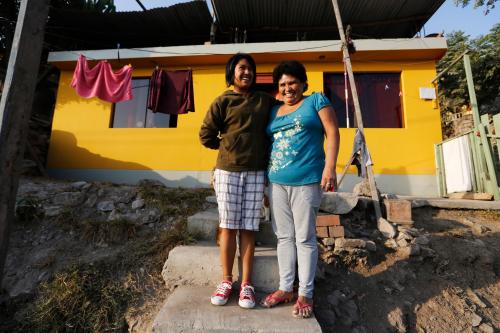
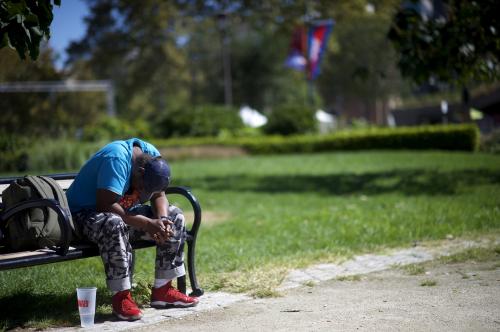
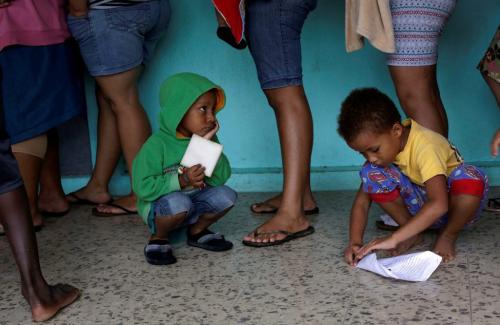


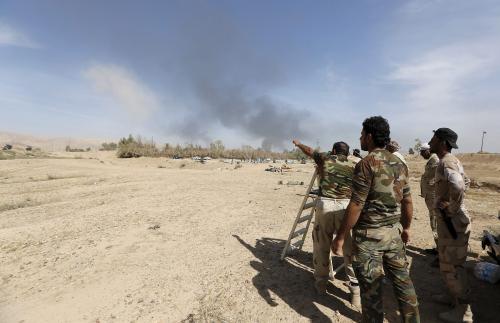
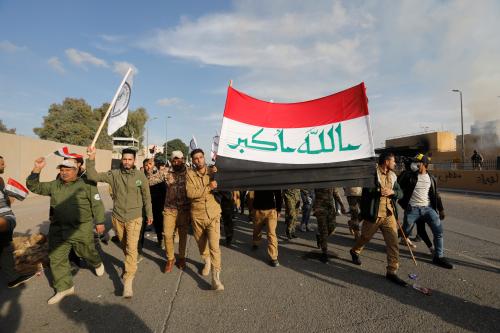

Commentary
Do social protection programs improve life satisfaction? Lessons from Iraq
July 10, 2018